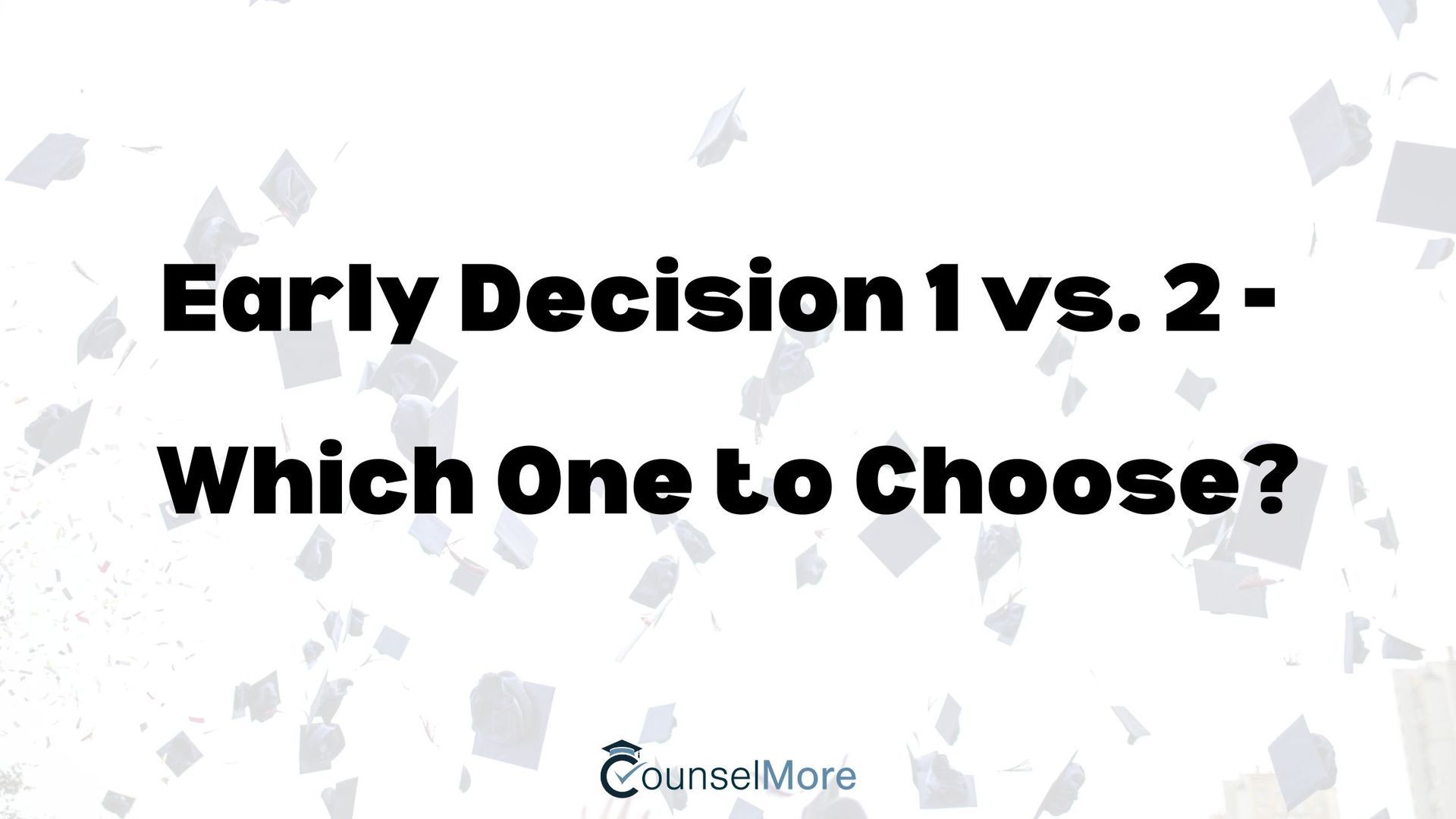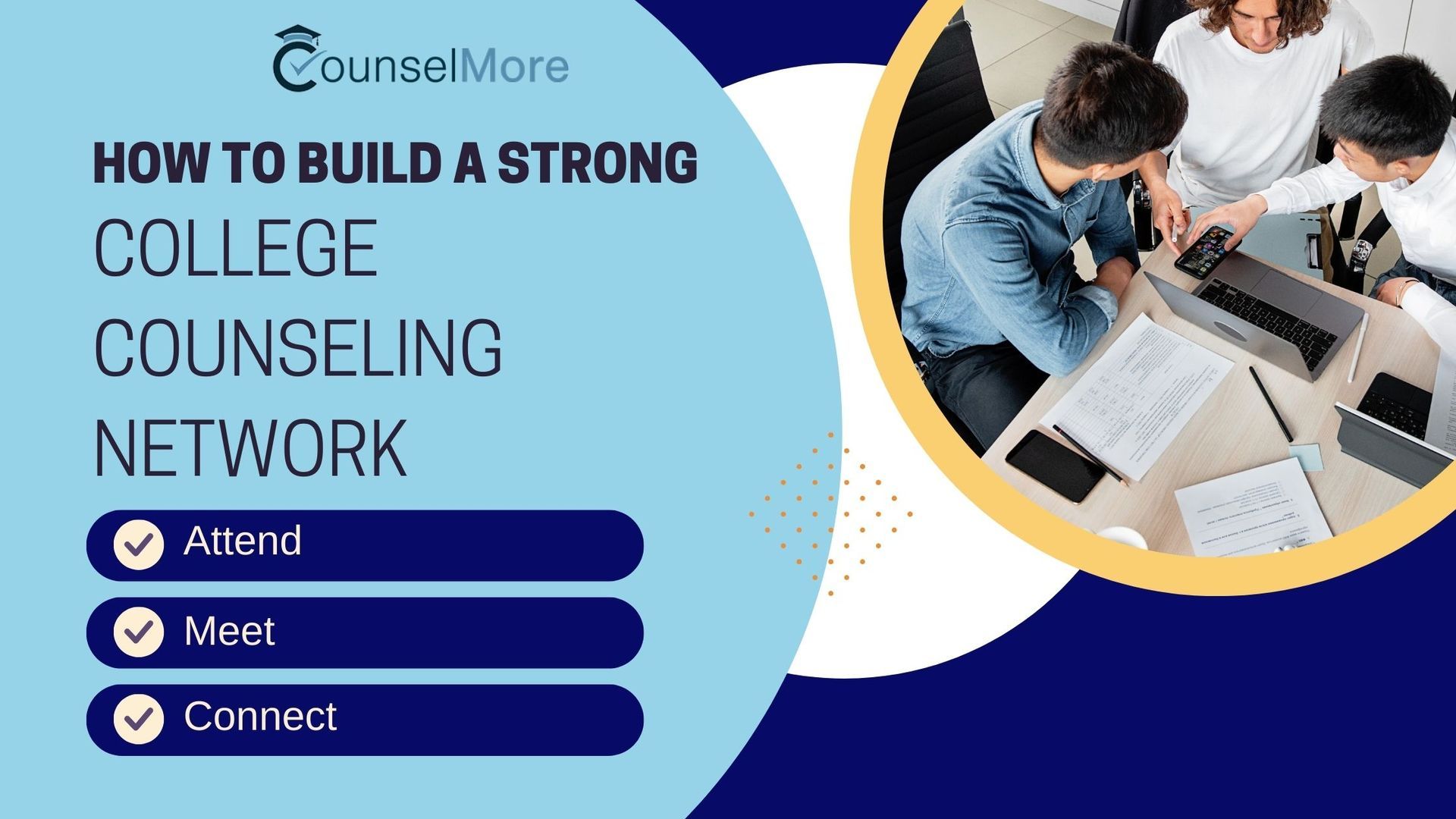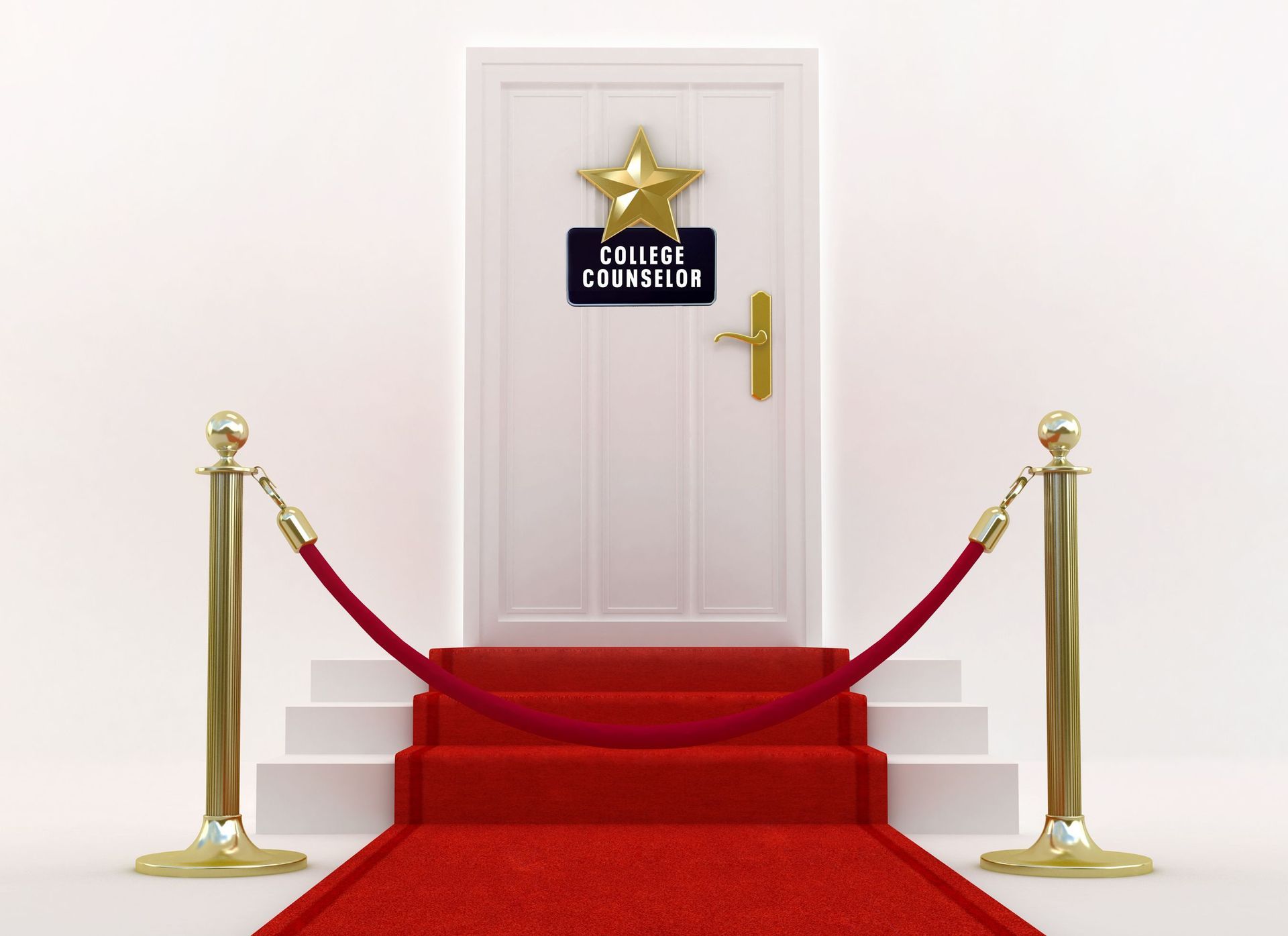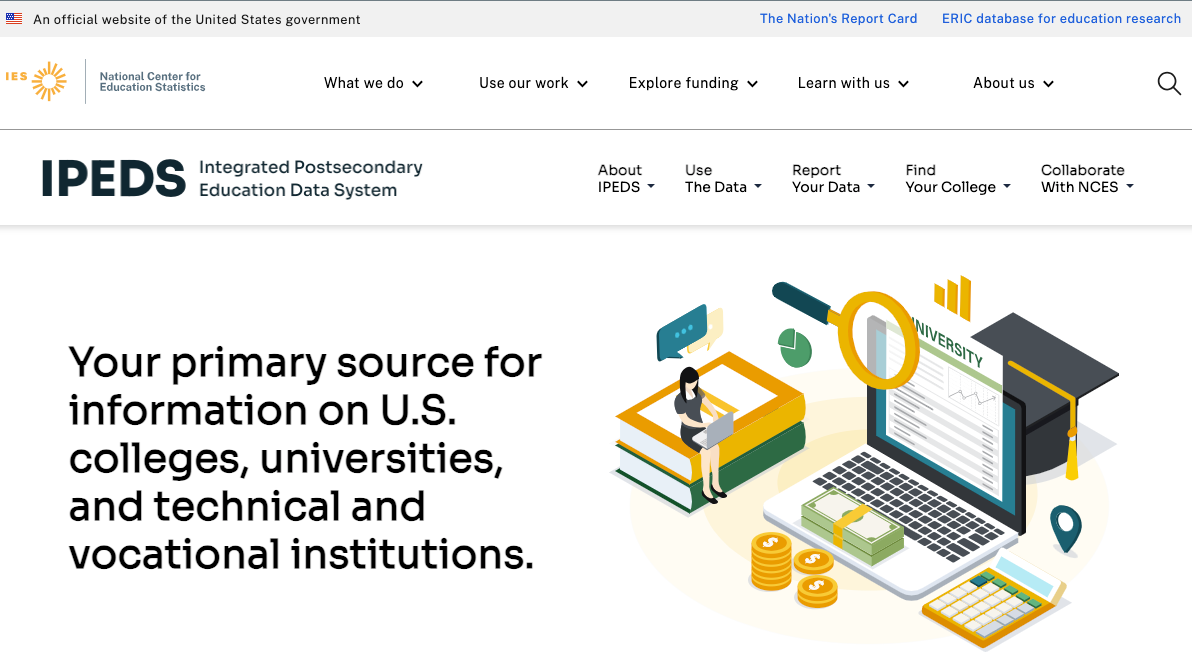Marc Gray is the Founder and Director of Education for Odyssey College Prep and the CEO of Powerful Prep. Marc uses advanced aptitude testing to simplify the college admissions process for students and parents. He also guides students to create targeted passion projects to differentiate their college applications. He currently serves as the Highlands Company’s ambassador to CounselMore. In that role, he enjoys helping other college counselors use aptitude testing to enhance their business. As an active member of CounselMore’s community, Marc hosts CounselMore’s Mentorship Community Roundtable Discussion, where college counselors can learn from one another and instruct each other in best practices.
Early Decision 1 vs. 2 - Which One to Choose?

More and more students are applying to colleges via Early Decision, and rightfully so. The college application process is a pivotal moment in a student's life, and one crucial decision they face is whether to opt for Early Decision 1 (ED1) or Early Decision 2 (ED2). Understanding the nuances between these two options can significantly impact both admission chances and financial aid offers.
Understanding Early Decision 1 vs Early Decision 2
Early Decision (ED) was introduced in the mid-20th century. The purpose of the admissions policy was to streamline the college admissions process for universities as much as students. Today, there are two main types: ED1 and ED2. The primary distinction lies in the application and decision timelines. ED1 typically has a deadline in November of the senior year, with decisions released in December. On the other hand, ED2 has a later deadline, usually in January, and decisions come out in February.
ED1 was traditionally for highly competitive students confident of their first-choice school. Meanwhile, ED2 emerged as a more flexible option. The flexibility of ED2 provides additional time for students to evaluate choices and strengthen applications. If admitted, you must withdraw all other college applications. Both options offer early notification, but they come with their own set of pros and cons.
The emphasis here is on the word must. Applying ED1 or ED2 is a contractual agreement that you will attend the school if admitted.
Pros and Cons: Early Decision 1 vs. Early Decision 2
Strengthening admission chances is a crucial advantage of both ED1 and ED2. Universities fill their first spots from applicants who apply using ED1 and ED2 before regular decision applicants. As you can imagine, this head start increases a student’s chances of securing a spot.
To understand how ED1 and ED2 help you, you must also understand how it helps the college. Colleges are businesses. They have institutional priorities that drive their selection processes. The more people who apply, the more selective their university appears. And while we could debate the morality of this practice (many have), what we can’t debate is its reality. And that reality is this: If you use ED1 or ED2, you’re giving the college a head start in finding a serious applicant. Consequently, they give you one. It’s a transactional arrangement that benefits both parties.
Universities value a high yield rate. Admitting students through ED1 and ED2 increases the likelihood of enrollment. This, in turn, relieves admissions offices from the challenge of predicting matriculation. Additionally, the selectivity of colleges is enhanced by admitting a higher percentage of students from the ED pools. Many selective schools, aiming to bolster their prestige, fill nearly a third of their spots through Early Decision.
What is Early Decision 1
ED1, in particular, may often have slightly higher acceptance rates than regular decision rounds. Colleges aim to secure a significant portion of their incoming class early. This can be attractive for students confident in their first-choice school and seeking a higher likelihood of acceptance. Applying ED1 generally gives a student a greater chance of admission than applying ED2. Universities value the enthusiasm and commitment that students show by applying ED1. In a way, applying ED1 is a way to show the coveted “demonstrated interest.”
Another benefit of ED1 is providing early resolution. That resolution offers clarity sooner in the admission process. This can be advantageous for students seeking a swift decision on their college application. This can give students time to make plans for their college experience with time to spare rather than being forced to make arrangements quickly.
What is Early Decision 2
On the other hand, ED2 serves as a "second chance" for students. Students who were deferred or rejected from their ED1 schools, or those who missed the ED1 deadline, can then apply for colleges that allow ED2 applications. This provides a valuable opportunity for applicants to reconsider their options and apply to a second-choice school with a more flexible timeline.
Moreover, the later timeline of ED2 offers applicants additional time to enhance their application. This includes finalizing standardized test scores and incorporating more recent academic achievements. This flexibility can be particularly beneficial for students whose academic performance shows an upward trend.
Drawbacks to Applying Early Decision
However, there are certain drawbacks to consider when opting for Early Decision. One significant limitation is the restricted ability to compare financial aid offers from multiple schools. This lack of comparison may have significant financial implications, as students might find themselves accepted into a school they cannot afford. Applying early could be risky if scholarship offers change where you plan to attend college.
Additionally, entering into a binding agreement through Early Decision comes with pressure. Essentially, you risk jeopardizing your standing with other colleges. Breaking the ED agreement is generally frowned upon, and the pressure to make a definitive decision early in the senior year might not allow sufficient time for campus visits or a thorough evaluation of all available options. However, it is possible to withdraw if you can convincingly show the financial aid package makes attendance impossible.

Strategy of Picking Early Decision 1 or Early Decision 2
The decision between ED1 and ED2 should align with your academic and personal circumstances. Evaluate your academic and extracurricular profile to determine if you are a strong candidate for your target schools. If your application is robust early in senior year and you have a clear first-choice school, ED1 might be the best route. Conversely, if you believe additional achievements could bolster your application, ED2 or Regular Decision may be more suitable.
Remember to be sure in your choices to apply early decision. Consider a scenario where you apply to your first-choice college, College A, in ED1. Sadly, you get deferred. This means your application goes into the regular decision pool. If deferred from ED1, you are released from your commitment if admitted. Because you were deferred, you applied to your second choice, College B, in ED2 and got accepted. Complications arise if you don't withdraw your application to College A after being accepted to College B. Be aware that attempting to change commitments might lead to withdrawal of acceptances.
The decision often boils down to timing, and a self-assessment can help gauge readiness to commit early or benefit from more time. However, carefully research each school's financial aid policies, as some offer generous packages to Early Decision applicants.
Conclusion: What is the difference between Early Decision 1 and 2?
Choosing between ED1 and ED2 is a critical decision with implications for your college journey. The key is understanding your academic standing, personal circumstances, and the commitment level you're willing to make. ED1 and ED2 offer distinct advantages, and your strategic approach can enhance your chances while aligning with your priorities.
Both ED1 and ED2 are binding contractual agreements you make with a college. However, the difference between ED1 and ED2 is their respective due dates. Often, ED1 deadlines fall around November 1. Contrastingly, ED2 deadlines usually fall around Jan 1.
Balancing the desire for early resolution with the need for additional time to refine your application is crucial. Make an informed decision based on your unique situation, keeping in mind the binding nature of the commitment and the potential impact on your future academic path.



















